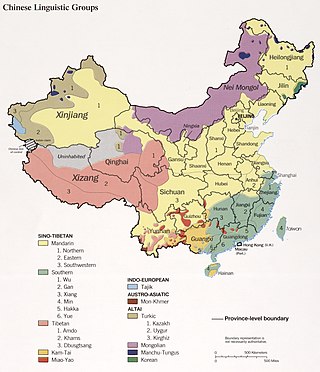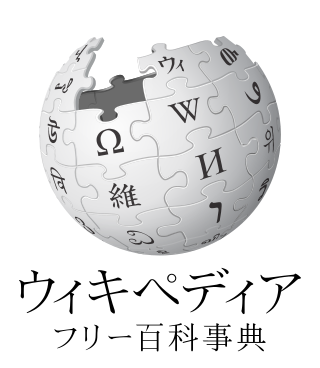RubyKaigi is an annual conference held in Japan for Ruby programmers that was held for the first time in 2006. [1]
RubyKaigi is an annual conference held in Japan for Ruby programmers that was held for the first time in 2006. [1]
During RubyKaigi, there are presentations, discussions, and events about the Ruby programming language.
RubyKaigi was originally called the "Japanese Ruby Conference," but there was some confusion with Ruby Central, so it was named RubyKaigi.
At the end of RubyKaigi2010, staff reported that the final year of RubyKaigi would be 2011,. [2] However, Ruby no Kai resumed RubyKaigi in 2013 as "RubyKaigi" instead of Japanese "Ruby会議". They also decided to change its first language to be English instead of Japanese. [3]

Japanese is spoken as a native language by about 128 million people, primarily Japanese people and primarily in Japan, the only country where it is the national language. Japanese belongs to the Japonic or Japanese-Ryukyuan language family. There have been many attempts to group the Japonic languages with other families such as the Ainu, Austroasiatic, Koreanic, and the now-discredited Altaic, but none of these proposals has gained widespread acceptance.

Ruby is an interpreted, high-level, general-purpose programming language which supports multiple programming paradigms. It was designed with an emphasis on programming productivity and simplicity. In Ruby, everything is an object, including primitive data types. It was developed in the mid-1990s by Yukihiro "Matz" Matsumoto in Japan.
Yukihiro Matsumoto, also known as Matz, is a Japanese computer scientist and software programmer best known as the chief designer of the Ruby programming language and its original reference implementation, Matz's Ruby Interpreter (MRI). His demeanor has brought about a motto in the Ruby community: "Matz is nice and so we are nice," commonly abbreviated as MINASWAN.
The Japanese-Language Proficiency Test, or JLPT, is a standardized criterion-referenced test to evaluate and certify Japanese language proficiency for non-native speakers, covering language knowledge, reading ability, and listening ability. The test is held twice a year in Japan and selected countries, and once a year in other regions. The JLPT is conducted by the Japan Foundation for tests overseas, and Japan Educational Exchanges and Services for tests in Japan.

There are several hundred languages in China. The predominant language is Standard Chinese, which is based on Beijingese, but there are hundreds of related Chinese languages, collectively known as Hanyu, that are spoken by 92% of the population. The Chinese languages are typically divided into seven major language groups, and their study is a distinct academic discipline. They differ as much from each other morphologically and phonetically as do English, German and Danish, but meanwhile share the same writing system (Hanzi) and are mutually intelligible in written form. There are in addition approximately 300 minority languages spoken by the remaining 8% of the population of China. The ones with greatest state support are Mongolian, Tibetan, Uyghur and Zhuang.
The Supreme War Council was established during the development of representative government in Meiji period Japan to further strengthen the authority of the state. Its first leader was Yamagata Aritomo (1838–1922), a Chōshū native who has been credited with the founding of the modern Imperial Japanese Army and was the first constitutional Prime Minister of Japan. The Supreme War Council developed a German-style general staff system with a chief of staff who had direct access to the Emperor and who could operate independently of the army minister and civilian officials. The Supreme War Council was the de facto inner cabinet of Japan prior to the Second Sino-Japanese War.

Roy Andrew Miller was an American linguist best known as the author of several books on Japanese language and linguistics, and for his advocacy of Korean and Japanese as members of the proposed Altaic language family.
Japanese Sign Language, also known by the acronym JSL, is the dominant sign language in Japan and is a complete natural language, distinct from but influenced by the spoken Japanese language.

In the Empire of Japan, an Imperial Conference was an extraconstitutional conference on foreign matters of grave national importance that was convened by the government in the presence of the Emperor.

Jonathan Gillette, known by the pseudonym why the lucky stiff, is a writer, cartoonist, artist, and programmer notable for his work with the Ruby programming language. Annie Lowrey described him as "one of the most unusual, and beloved, computer programmers" in the world. Along with Yukihiro Matsumoto and David Heinemeier Hansson, he was seen as one of the key figures in the Ruby community. His pseudonym might allude to the exclamation "Why, the lucky stiff!" from The Fountainhead by Ayn Rand.

The Eiken Test in Practical English Proficiency — informally, Eiken; often called STEP Eiken or the STEP Test — is an English language test conducted by a Japanese public-interest incorporated foundation, the Eiken Foundation of Japan, and backed by the Japanese Ministry of Education, Culture, Sports, Science and Technology (MEXT).

The languages of Taiwan consist of several varieties of languages under the families of Austronesian languages and Sino-Tibetan languages. The Formosan languages, a branch of Austronesian languages, have been spoken by the Taiwanese indigenous peoples for thousands of years. Owing to the wide internal variety of the Formosan languages, research on historical linguistics recognizes Taiwan as the Urheimat (homeland) of the whole Austronesian languages family. In the last 400 years, several waves of Han emigrations brought several different Sinitic languages into Taiwan. These languages include Taiwanese Hokkien, Hakka, and Mandarin, which have become the major languages spoken in present-day Taiwan.
Japanese language education in Russia formally dates back to December 1701 or January 1702, when Dembei, a shipwrecked Japanese merchant, was taken to Moscow and ordered to begin teaching the language as soon as possible. A 2006 survey by the Japan Foundation found 451 teachers teaching the language to 9,644 students at 143 institutions; the number of students had grown by 4.8% since the previous year. Aside from one Japanese-medium school serving Japanese people in Russia, virtually all Japanese language education in Russia throughout history has been aimed at non-native speakers.

Naokazu Takemoto is a Japanese politician serving in the House of Representatives in the Diet as a member of the Liberal Democratic Party.
Shinsuke Okuno is a Japanese politician of the Liberal Democratic Party, a member of the House of Representatives in the Diet. A native of Gose, Nara and graduate of Keio University, he was elected to the House of Representatives for the first time in 2003. He is affiliated to the revisionist lobby Nippon Kaigi.

Yoshitaka Sakurada is a Japanese politician of the Liberal Democratic Party, and a member of the House of Representatives in the Diet. He formerly served as Minister of State for the Tokyo Olympic and Paralympic Games in the Fourth Abe Cabinet.
Ruby Central, Inc., is a non-profit organization based in the United States, dedicated to support and advocacy for the Ruby programming language.

The Japanese Wikipedia is the Japanese-language edition of Wikipedia, a free, open-source online encyclopedia. Started on 11 May 2001, the edition attained the 200,000 article mark in April 2006 and the 500,000 article mark in June 2008. As of June 2023, it has over 1,379,000 articles with 14,319 active contributors, ranking fourth behind the English, French and German editions.

Hoshū jugyō kō (補習授業校), or hoshūkō (補習校), are supplementary Japanese schools located in foreign countries for students living abroad with their families. Hoshū jugyō kō educate Japanese-born children who attend local day schools. They generally operate on weekends, after school, and other times not during the hours of operation of the day schools.
The Nippon Kaigi is Japan's largest ultraconservative and ultranationalist far-right non-governmental organization and lobby group. It was established in 1997 and has approximately 38,000 to 40,000 members as of 2020.